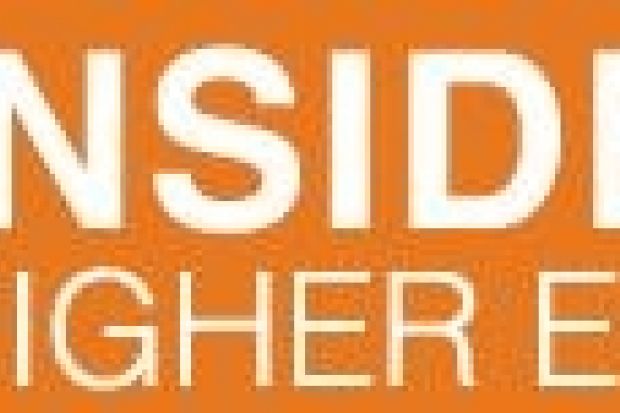The rate at which undergraduate students in the US took foreign language courses in 2009 remained constant compared with three years prior, while the variety of languages offered continued to set records, according to the findings of a survey conducted by the Modern Language Association of America, to be released on Wednesday.
In raw terms, the number of enrolments – the metric used by the MLA to capture course participation rather than the number of students studying a language – grew from 1.57 million in 2006 to 1.68 million in 2009, or 6.6 per cent. That percentage growth was about half the one last reported, between 2002 and 2006.
“I believe that the exciting takeaway from this report is that more students are studying more languages,” Russell A. Berman, first vice-president of the MLA and professor of German studies and comparative literature at Stanford University, said during a Tuesday call with reporters.
But this growth took place during a period in which the total number of undergraduate students also increased. As a result, the ratio of enrolments in language courses compared with overall student enrolments remained at 2006 levels – 8.6 per 100 total enrolments. While this level is lower than the high mark of 16.5 enrolments per 100 set in 1965, the current ratio still exceeds those since the early 1970s (except for 2006), and is above the low of 7.3 enrolments per 100 in 1980.
Similarly, the percentage of bachelor’s degrees earned in foreign languages (1.16 for every 100 – 70 per cent of which are earned by women) has remained flat since 1980. This rate is also well below the high of 3 per cent earned in 1968, according to MLA data. One historical reason for the drop cited by the report’s authors, Nelly Furman, David Goldberg and Natalia Lusin, is the move in the late 1960s away from prescribed core requirements. Distribution requirements, which replaced many core curriculums, have generally demanded less extensive coursework in foreign languages compared with past decades.
The release of the survey results comes amid trying times for foreign languages, with many departments facing cuts, closures or mergers with other programmes. Recently, administrators at the State University of New York at Albany announced that they wanted to close admissions to programmes in French, Italian and Russian. Majors in German and Russian also face extinction at Howard University. Berman described such cuts as “perplexing” given the increasing number of students seeking out such courses, coupled with a decade’s worth of public preoccupation with globalisation and international connectedness.
“Some administrators are just simply short-sighted,” he said. “It’s a problem of a lack of imagination in parts of higher education leadership.”
This year’s survey, the 22nd produced by the MLA since 1958, tracked undergraduate and graduate course enrolments in languages other than English in autumn 2009 at 2,514 associate, bachelor’s, master’s and doctoral-granting institutions nationwide. These institutions represent 99 per cent of the higher education institutions that offer language courses in the US. The survey is so comprehensive that it captures not just the most popular languages (Spanish, French, German and American Sign Language, in that order) but also the seven that had just one student enrolled at any level in 2009 (Albanian, Aymara, Javanese, Kana, Kyrgyz, Malay and Tswana, if you were curious). In all, 232 different languages were taught, which marks a record.
Arabic posted the most vigorous increase in popularity, with 46 per cent more enrolments in 2009 than it had three years prior. The showing allowed Arabic to leapfrog from 10th place to eighth on the list of most popular languages. American Sign Language (16.4 per cent), Japanese (10.3 per cent) and Chinese (18.2 per cent) also posted double-digit per cent gains. Spanish remained far and away the most popular language, with nearly 865,000 enrolments. Its growth rate was 5.1 per cent over 2006.
The aggregate growth also disguised very different trends in language study among varying types of institution. Community colleges witnessed the most robust increase, posting 14 per cent more enrolments than they had in 2006. Hawaiian and Vietnamese were among the most popular languages at these institutions, though they were absent from the roster of highly subscribed courses at four-year colleges. Rosemary G. Feal, executive director of the MLA, said that the growth in language study among two-year colleges could reflect students’ interest in connecting to their heritage or becoming better equipped to work in nearby communities, among other reasons. “Students are seeing language as an essential part of the toolkit for career readiness,” she said.
At four-year institutions, the growth was more steady, at 4.8 per cent. Enrolment in graduate programmes, on the other hand, fell 6.7 per cent since 2006 – a drop that caused experts to express worry about the future viability of programmes at the college level. “There’s reason to be concerned that some students may be facing restricted access,” said Berman, adding that fewer people with doctorates in languages would translate, eventually, into fewer people to teach those programmes. “I think we have to make sure this pipeline remains strong.”
Feal pointed to another troubling trend: colleges preserving more popular and highly subscribed introductory foreign language courses – which allow students to satisfy core requirements – while slashing advanced classes. “Four semesters give you a foundation,” which can help students build basic skills in a language, said Feal. The higher levels of language study open higher modes of thought and scholarship because that is where, she continued, “expertise and liberal learning, frankly, are in play”.
Register to continue
Why register?
- Registration is free and only takes a moment
- Once registered, you can read 3 articles a month
- Sign up for our newsletter
Subscribe
Or subscribe for unlimited access to:
- Unlimited access to news, views, insights & reviews
- Digital editions
- Digital access to THE’s university and college rankings analysis
Already registered or a current subscriber? Login
